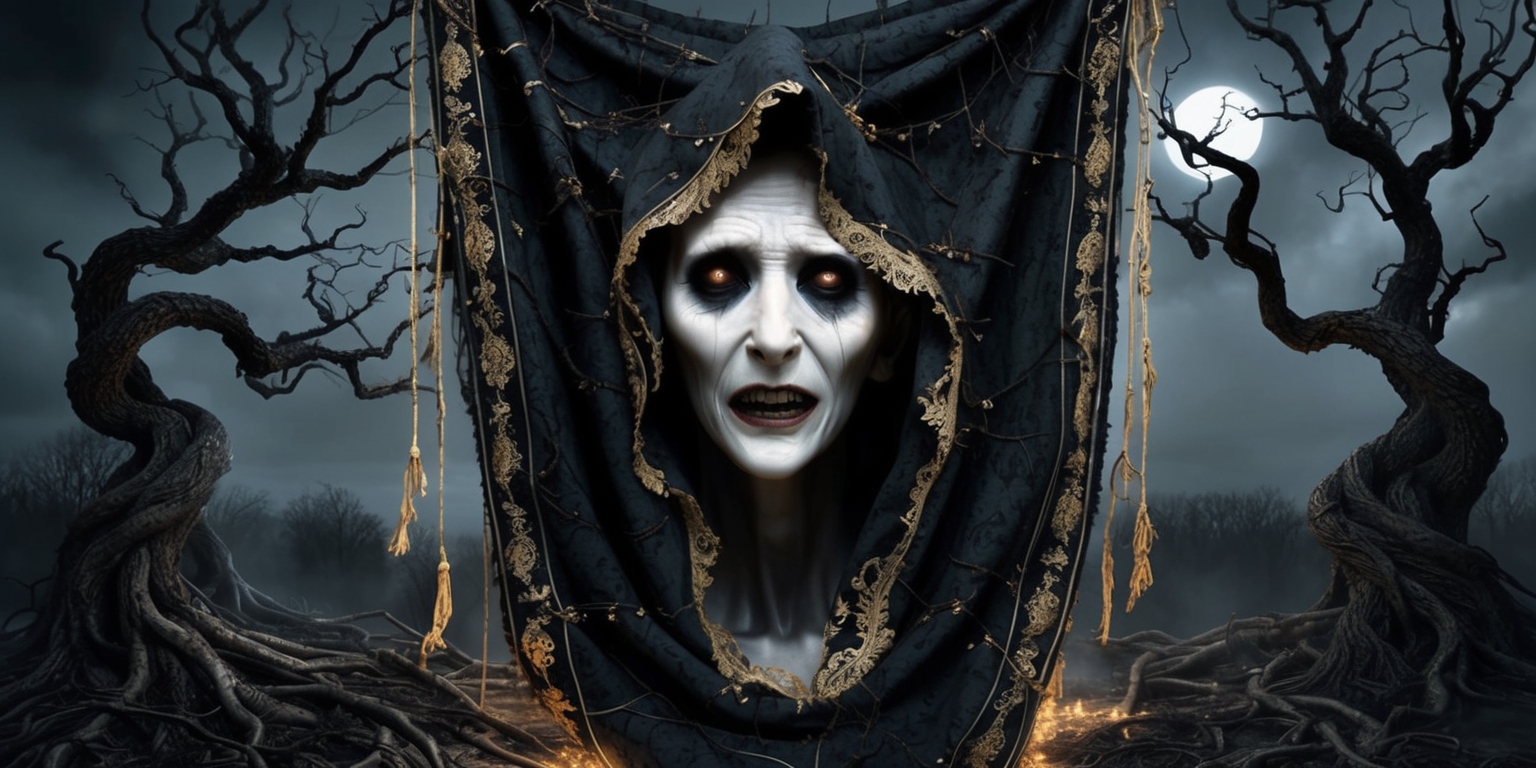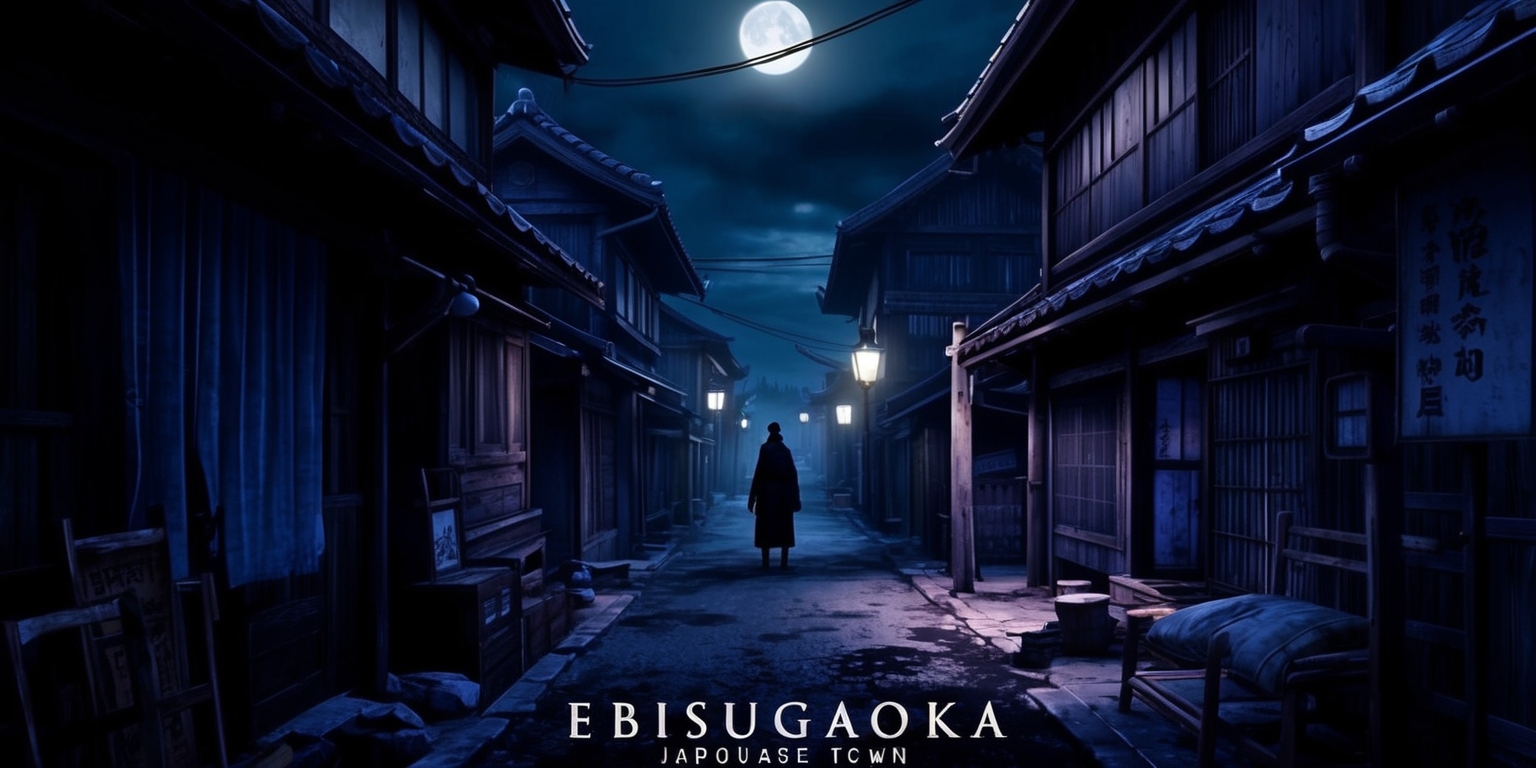Ebisugaoka’s Lament: Unraveling the Tapestry of Surreal Terror
- 23 Sep 2025
- 0

This immersive experience thrusts the player into a reimagined world steeped in unsettling beauty and psychological dread. The game deftly intertwines elements of traditional horror with surreal narratives, inviting you into a A world in which each dark corner conceals its own mystery and every flicker of light reveals a new fear. Set against the backdrop of 1960s rural Japan, it challenges you to decipher shifting realities while navigating surreal landscapes that evoke both nostalgia and trepidation. From unsettling environmental details to intricate narrative threads, every element crafts a tapestry of terror that is equally as intellectually engaging as it is visually captivating striking.
Twisted Atmosphere and Ethereal Landscapes
The game whisks you away into a captivating realm where reality blurs with the uncanny. The eerie fog, reminiscent of a valiant specter, gently swallows the town of Ebisugaoka and transforms familiar corners into unsettling vistas. Red spider lilies, vibrant yet ominous, infest the landscape, causing once ordinary streets to seem alive with hidden menace. The visual presentation is a symphony of color and darkness, where every environment is meticulously rendered to evoke a feeling of both wonder and discomfort. Every detail—from the crisscrossing lanterns along narrow alleys to the unnerving twists of nature overtaking human spaces—adds to an intricate environment that demands the player’s full attention, pulling them deeper into the maze of horror and mystery.
Lyrical Storytelling and Intricate Worldbuilding
The narrative of this game is a masterful blend of palpable dread and evocative prose. Each dialogue and environmental note weaves a complex tapestry of personal and supernatural terrors. The story does not merely act as a backdrop; it is an active force that subtly influences gameplay, drawing you into the protagonist’s emotional landscape. The carefully crafted lore is hidden in diary entries, cryptic magazine headlines, and carefully stashed journal fragments that encourage you to piece together the history of Ebisugaoka. With meticulous attention to detail, every interaction feels laden with hidden meaning, making the unfolding narrative an intellectual Consider this alternative: "riddle that's equally captivating and thought-provoking." chilling.
Haunting Character Journeys in a Shifting Reality
At the heart of this experience is Hinako Shimazu, a young woman whose personal journey mirrors the broader melancholy of a town caught between myth and nightmare. Hinako’s encounters address both the universal fears of growth and the specific anxieties of her troubled existence within a society steeped in rigid expectations. Her struggles—a poignant mix of psychological conflict and visceral survival—are depicted with a sincerity that invites empathy and introspection. As you navigate her world, you feel a profound connection to her plight, each step laden with emotional tension and foreboding uncertainty. Her evolution is interwoven with the game’s supernatural events, making her trials both a personal and metaphoric confrontation with the unknown.
Intricate Gameplay Mechanics and Demanding Combat

The combat system introduces an engaging but sometimes perplexing array of close-quarters confrontations. Hinako’s repertoire of light and heavy strikes, combined with the capacity to charge a Focus attack designed to sap sanity, represents the game’s attempt to blend action with psychological horror. Players must manage stamina carefully, executing timely dodges to restore it, while also timing counterattacks to keep relentless foes at bay. The mechanics encourage a rhythmic blend of offense and defense, yet at times the deliberate pace and occasional clunkiness of the animations can lead to frustrations during large-scale encounters. The game demands precision and strategy, rewarding those who manage to synchronize their movements with the eerie cadence of the gameplay, even as unexpected enemy tactics keep every fight unpredictable and challenging.
Visual Aesthetics and Distorted Beauty
The game’s aesthetic is a vivid exploration of the interplay between beauty and horror. Streaks of red and dense layers of fog create an environment where every scene seems to be a carefully composed painting with an undercurrent of dread. The transformation of a quaint town into a living entity filled with organic distortions is both mesmerizing and unnerving. Each corner of Ebisugaoka is rendered with a contrasting mix of nostalgic charm and creeping decay, evoking the spirit of classic horror while establishing a distinct narrative voice. The frantic juxtaposition of natural beauty and aberrant monstrosities drives home the core theme that terror "displays a level of visual magnetism that rivals its overall allure" emotionally wrenching, turning every moment into a visual exploration of twisted allure.
Exploration of the Supernatural and the Mundane
Delving deeper into the game world, players are invited to explore a setting that effortlessly melds the supernatural with the everyday. Ebisugaoka is portrayed as a town where ordinary details take on a sinister twist: narrow mountain trails, claustrophobic alleyways, and small houses seem infused with both mundane authenticity and an unmistakable aura of dread. The game’s design makes every region a mystery to decipher. From ancient, moss-covered relics to surreal manifestations in the Dark Shrine, every location is layered with both historical and personal significance. This intertwining of folklore and reality makes exploration a meditative process, where each step unearths symbols of a larger narrative and unspoken personal histories deep within the town’s decaying heart.
Fluid Yet Challenging Combat Dynamics
The combat encounters in the game are anything but straightforward. While the system incorporates an intuitive array of moves, each requiring a careful balance between attack and defense, it often introduces complex interactions that can disrupt the immersion. Hinako, designed with a rapid-fire combination of strikes and special moves, is capable of unleashing a dangerous flurry of intense attacks. However, when enemies converge in large groups, the execution of these maneuvers demands acute precision. Response windows for enemy counterattacks are limited, and missteps can lead to prolonged recovery animations, heightening the tension. The dichotomy between the potential for flawless execution and the inevitable moments of clunky response makes every encounter both exciting and occasionally exasperating, urging the player to continuously adapt and refine their combat timing.
Clash of Titans: Boss Encounters and Overarching Threats
Boss battles emerge as pivotal moments that elevate the narrative and confront the player with existential dread. Each towering adversary appears as a masterpiece of grotesque design, an embodiment of the town’s unresolved traumas and mysterious history. The bosses not only test the limits of Hinako’s combat abilities but also serve as symbolic representations of her internal struggles. Their attacks are choreographed with a terrifying elegance that leaves a lasting impact. Unlike the more trial-and-error nature of standard encounters, these titanic clashes require a deep understanding of timing, strategic defense, and patterned aggression. As their haunting dialogue intertwines with the chaos of battle, every boss fight feels like an unforgettable, cinematic confrontation that significantly contributes to the emotional heft of the journey, striking a delicate balance between horror and action.
Puzzle Integration and Layered Environmental Narratives
The game shines in the way it marries puzzle-solving with atmospheric storytelling. Navigating areas such as the ancient school, players are required to uncover hidden keys, piece together cryptic diary fragments, and decipher combinations that unlock deeper secrets of Ebisugaoka. The puzzles are seamlessly integrated into the narrative, each challenge reflecting both literal and metaphorical barriers in Hinako’s path. These cerebral moments contrast with the more visceral encounters, offering respite and an opportunity to become completely absorbed in the game’s lore. The puzzles demand a blend of observation and logic, as each discovered clue reveals factions of the town’s storied past. This methodical piecing together of information not only deepens the backstory but also reinforces the pervasive unease that underpins the entire horror experience.
Dissonance Between Control and Chaos in Gameplay
The gameplay constantly oscillates between a desire for control and the overwhelming force of chaos. As you traverse the labyrinthine alleys and crumbling structures, a calculated strategy can suddenly dissolve into frantic, uncontrolled combat scenarios. The meticulously constructed mechanics sometimes waver under the strain of unpredictable enemy behavior or disproportionate recovery animations. This duality—where precise maneuvering is essential yet often compromised by clunky sequences—creates a unique tension throughout the experience. Players must not only learn the intricacies of the combat system but also adapt to its imperfections, finding a balance between decisive action and cautious evasion. The experience is a testament to the game’s ambition in challenging conventional paradigms, forcing you to confront both external horrors and internal frustrations as you push forward in the face of overwhelming odds.
Integration of Folklore and Contemporary Fears
The narrative profundity of the game is further enriched by its seamless integration of folklore with modern anxieties. Drawing heavily on the mystical imagery of 1960s Japan, the game revisits traditional legends and reimagines them within a modern framework cyclopean horrors and dark shrines are more than mere spectacles of terror; they serve as allegories for the internal dilemmas of its characters. Hinako’s journey through a town gripped by ancient, inscrutable forces is interlaced with modern-day cultural pressures, such as the burdens of societal expectations and ambiguous rites of passage. This careful blending of cultural motifs not only elevates the haunting atmosphere but also infuses the narrative with layers of meaning that resonate with anyone who has wrestled with the age-old battle between tradition and modernity.
Diverse Approaches to Story Delivery and Exploration
The storytelling mechanism is as unconventional as it is effective, presenting the narrative in a mosaic of layered vignettes rather than a linear tale. Hidden diary entries, environmental messages, and scattered lore documents gradually converge to unveil the mysteries behind Ebisugaoka and Hinako’s troubled past. Each discovery feels significant, a poignant narrative fragment that offers insight into deeper themes of loss, identity, and the inexorable march of fate. This non-linear method encourages exploration and rewards players for meticulous attention to detail. The game’s world feels intentionally fragmented, mirroring the protagonist’s internal chaos and the surreal warping of reality. In this way, the journey is a constant rediscovery of context and meaning, as every shadow and whisper adds another piece to the larger, unsettling puzzle that is the game’s narrative landscape.